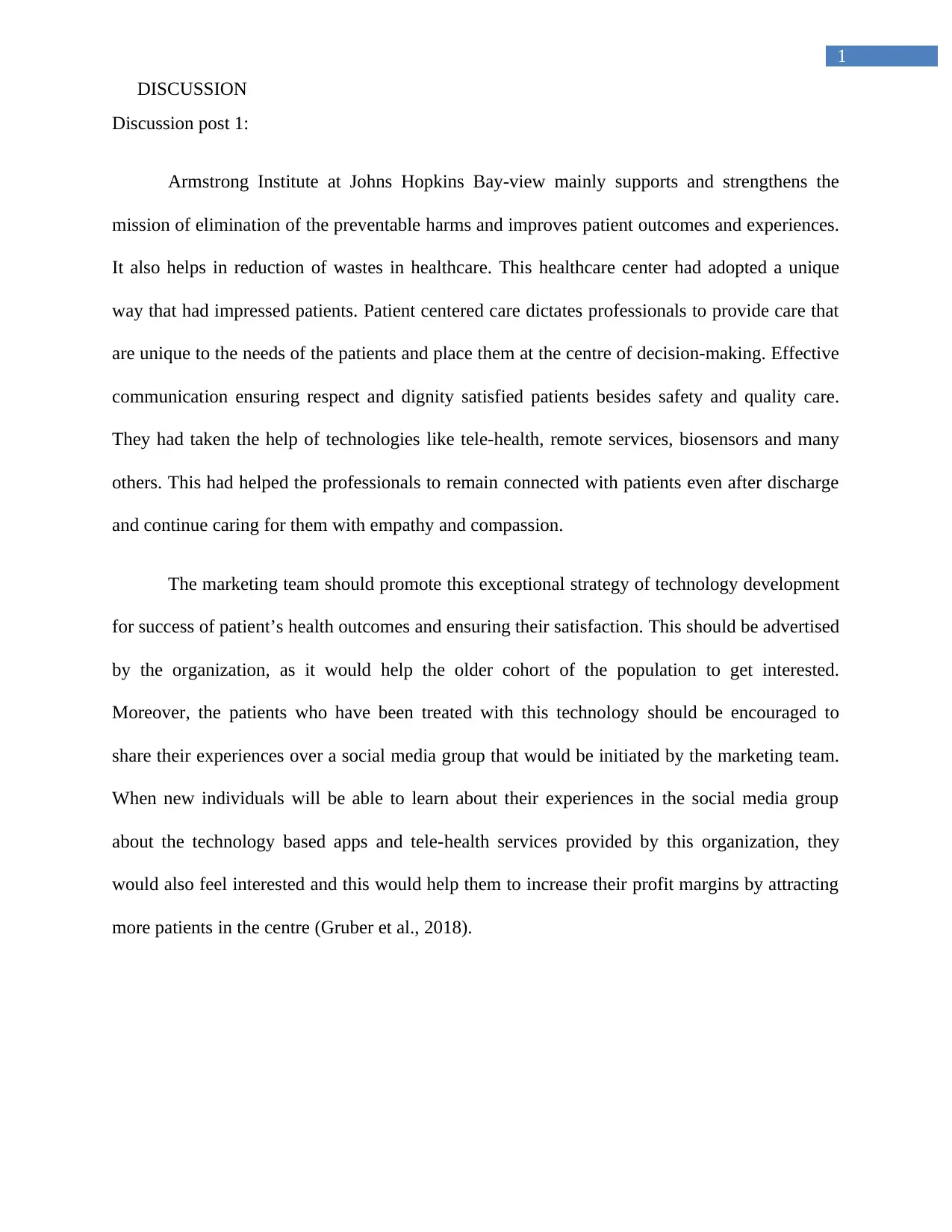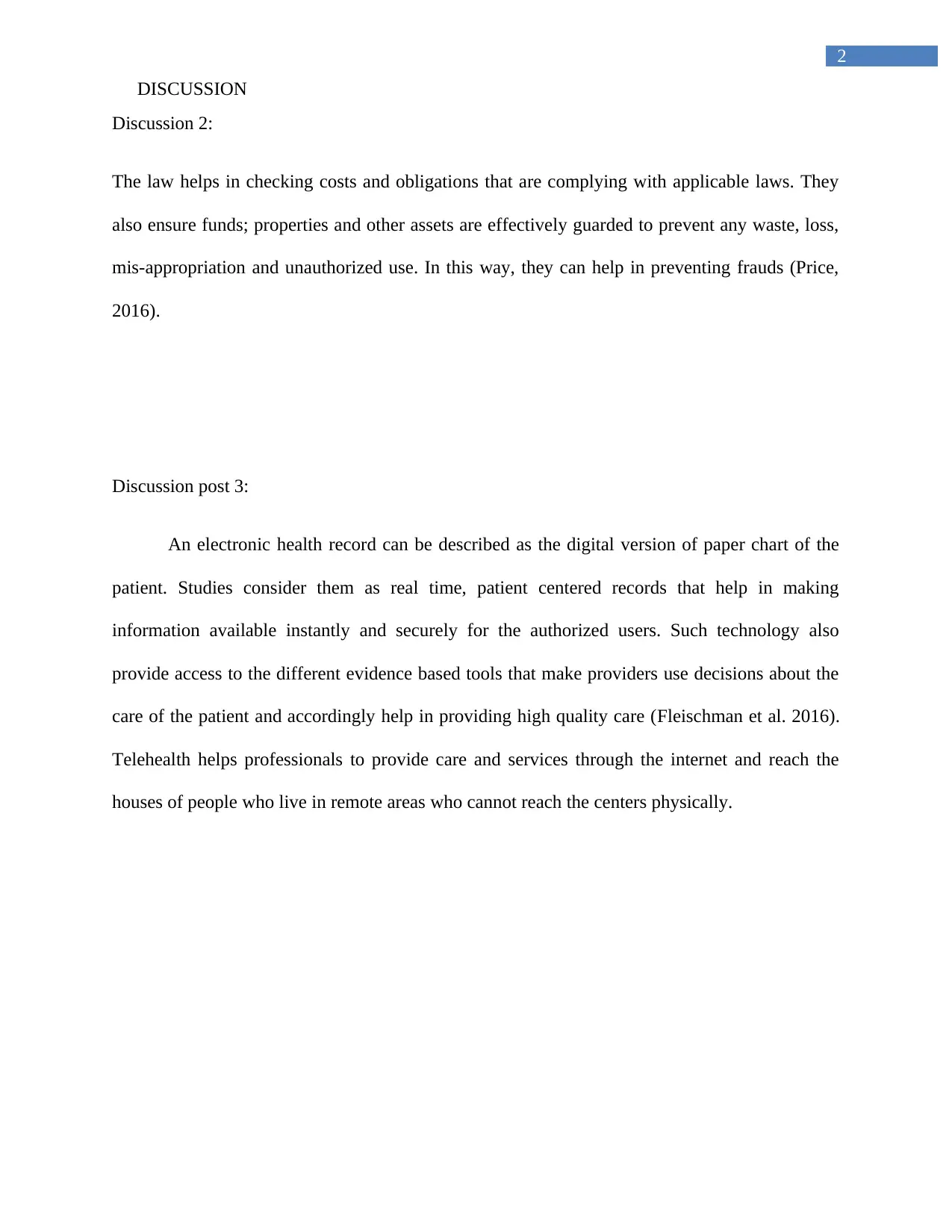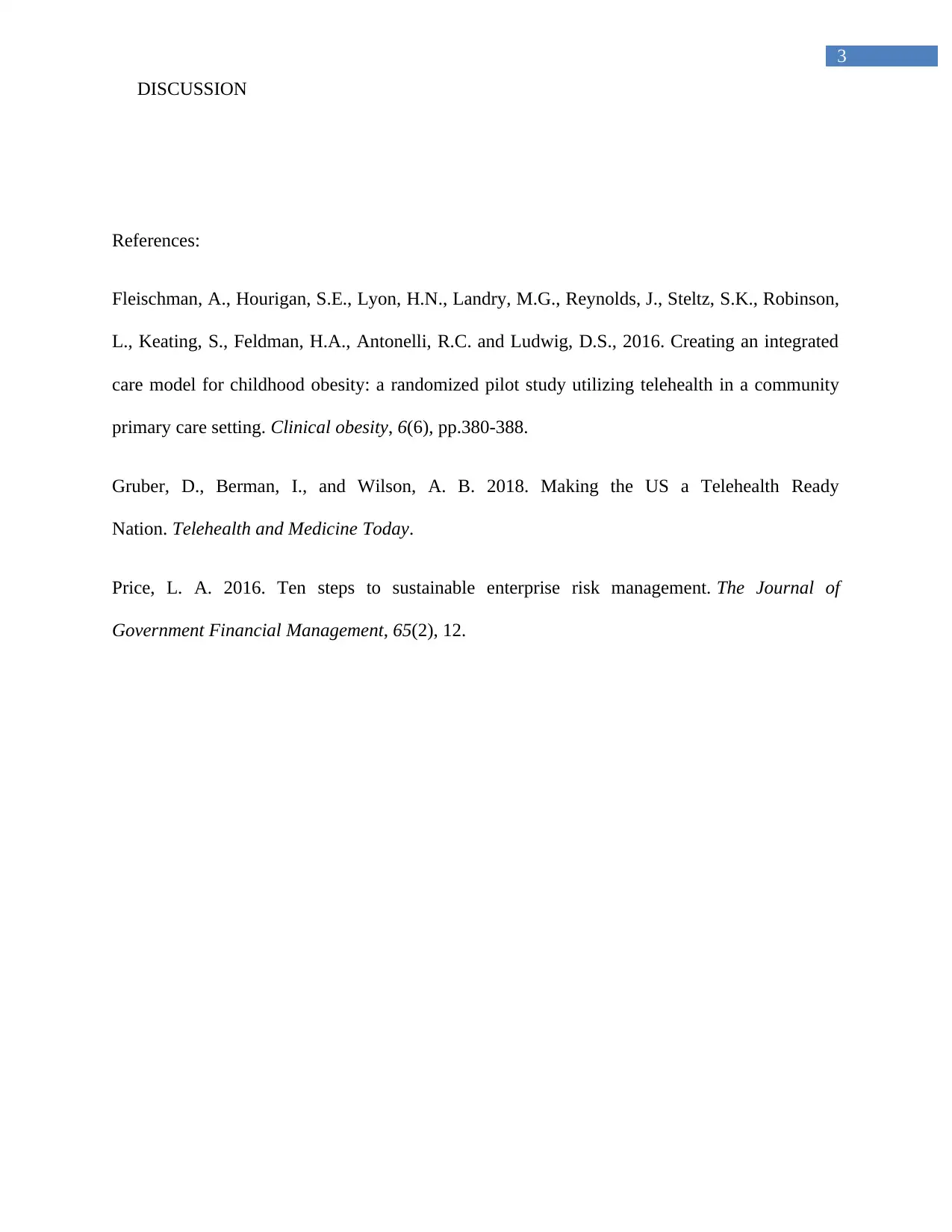Healthcare Discussion: Technology, Patient Care, and Satisfaction
VerifiedAdded on 2023/05/28
|4
|606
|444
Discussion Board Post
AI Summary
This assignment comprises a series of discussion posts focusing on enhancing patient outcomes and satisfaction within the healthcare sector. The first post highlights the Armstrong Institute's patient-centered care model, emphasizing the use of technologies like telehealth and biosensors to improve patient experiences and reduce healthcare waste. It suggests marketing this technology-driven approach to attract a broader patient base, particularly older demographics, and encouraging patients to share their experiences via social media. The second post underscores the role of laws in managing healthcare costs, ensuring asset protection, and preventing fraud. The third post discusses the benefits of electronic health records in providing real-time, patient-centered information to authorized users, facilitating evidence-based decision-making and high-quality care. It also touches upon the significance of telehealth in extending care to remote populations. Desklib provides a platform to explore more solved assignments and resources for students.
1 out of 4











![[object Object]](/_next/static/media/star-bottom.7253800d.svg)